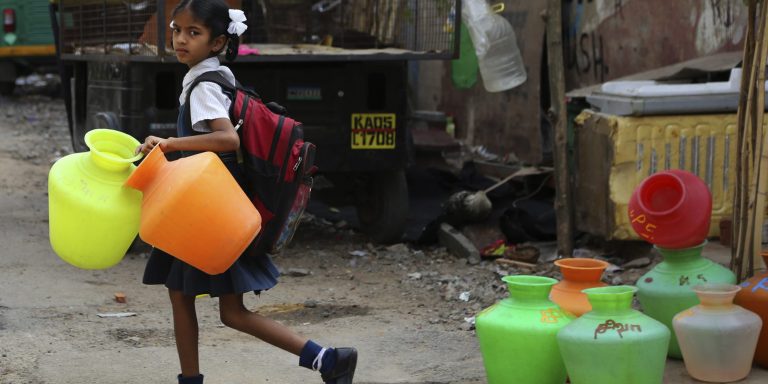INTELBRIEF
June 18, 2018
IntelBrief: Water Wars

- India is suffering from its worst water crisis in modern history, according to a new report.
- The scale of need is immense, with tens of millions of people now suffering from water shortages or contaminated water.
- India is far from alone—as the global population continues to grow and global temperatures continue to warm, there will not be enough water to meet demand.
- Places like Yemen, Ethiopia, and Egypt have long suffered water-driven instability; now many more countries will do the same.
.
Growing populations, industrial agriculture and high-tech industries—hallmarks of the modern world—depend on the reliable availability of massive amounts of water. In many places, access to water has long been a contentious issue. It is very likely that with a looming global water crisis, conflicts over water will increase.
A June 2018 report buy NITI Aayog, the National Institute for Transforming India, the Indian government’s official ‘think tank’ on sustainability, provides data that shows that not only is India currently in its worst water crisis in modern times, but that the crisis is going to get much worse. India is ranked 120th out of 122 countries in terms of water quality, with millions of people drinking contaminated water. Far more completely lack access to water. The report says that an astounding 600 million people face ‘high to extreme water stress’ and that 200,000 people die every year from ‘inadequate access to safe water.’
The report states that ‘by 2030, the country’s water demand is projected to be twice the available supply, implying severe water stress to hundreds of millions of people and an eventual 6 percent loss in the country’s GDP.’ The strong Indian economy has slowly lifted hundreds of millions of its people from severe poverty, but it won’t continue to do so if the country continues to lose access to water. Large cities including New Delhi and Hyderabad will run out of safe groundwater perhaps as soon as 2020—with dire consequences if that occurs.
India is the most populous country to face such an overwhelming water crisis, but it is far from alone. This includes in Yemen, which has battled a water-fueled insurgency for years, with the scarcity of water contributing to unrest and exacerbating other issues—including an already weak economy and crumbling infrastructure—making it even less able to provide for its people during the last three years of war. Across Africa, drought is worsening and causing increased strife on a continent where deprivation and violent conflict are rife. States’ actions to increase their own access to water can cause other problems. For example, Ethiopia’s project to dam the Blue Nile has caused serious tensions with Egypt. From Somalia to South Africa, water and time are running out.
Accelerating climate change leading to a rapidly warming planet will further exacerbate water shortages (and the countering destructive floods) to levels that no country, however blessed in natural resources, can weather. Alone among Western democracies, the U.S. administration continues to not just ignore the worsening effects of climate change but actually deny these effects are taking place. While the EU sees climate change as ‘the’ collective challenge of our time, the current U.S. administration sees it as an obstacle to selling more coal abroad. Still, even with serious international attention being paid to the effects of climate change, there is no consensus on how to collectively address dwindling water supplies amid skyrocketing global demand.
.
For tailored research and analysis, please contact: info@thesoufancenter.org
[video width="960" height="540" mp4="https://thesoufancenter.org/wp-content/uploads/2018/06/Final-Edit-1-217.mp4" poster="https://thesoufancenter.org/wp-content/uploads/2018/06/AP_18081314066836-1-e1529152281176.jpg"][/video]